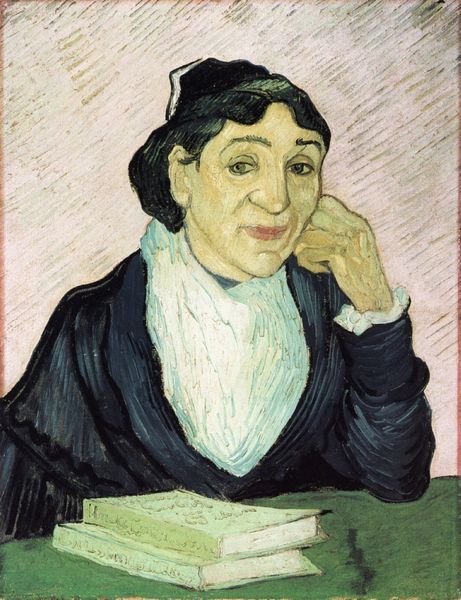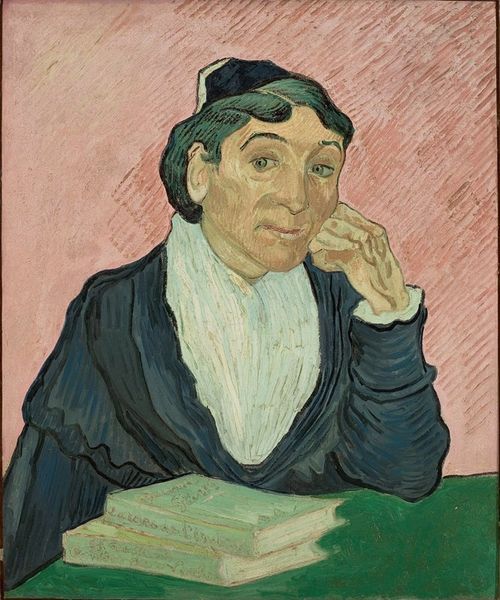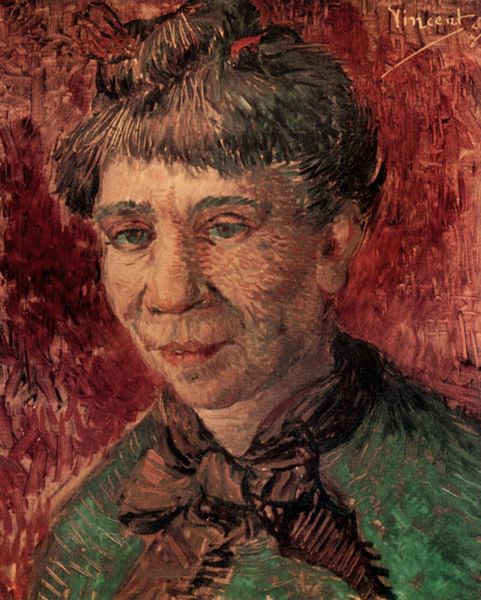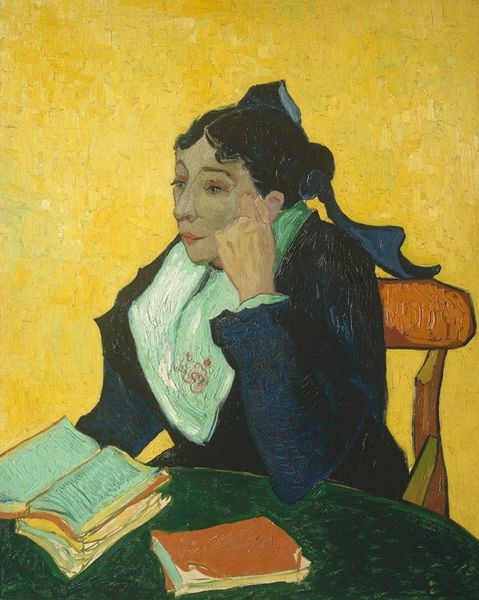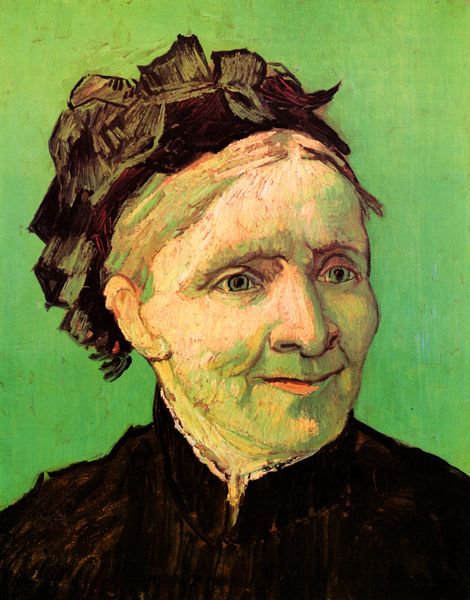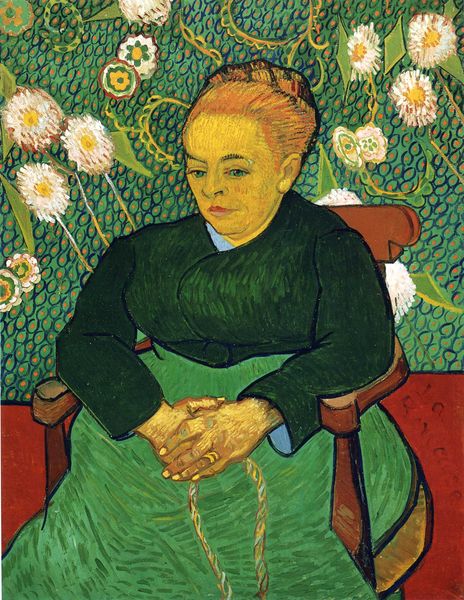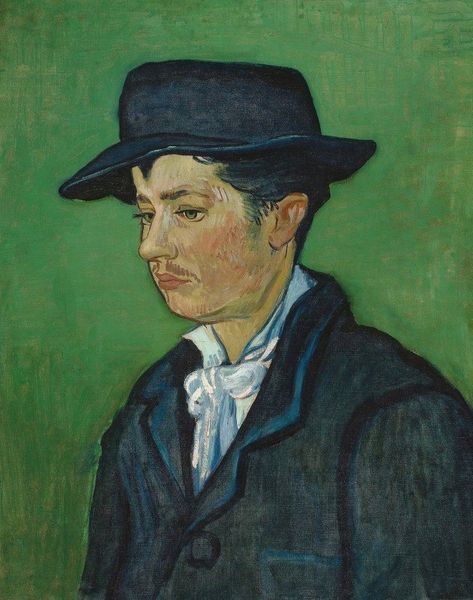
painting, oil-paint
#
portrait
#
painting
#
oil-paint
#
oil painting
#
intimism
#
post-impressionism
Dimensions: 50 x 60 cm
Copyright: Public domain
Curator: This is Vincent van Gogh’s "Portrait of Madame Ginoux," or "L'Arlesienne," painted in 1890, a year before his death. Editor: What immediately strikes me is how subdued the colours are. It's not what one expects from Van Gogh. And the brushstrokes, while visible, are much more controlled. Curator: That control might reflect the circumstances surrounding its creation. Van Gogh painted this while at the Saint-Paul-de-Mausole asylum in Saint-Rémy. He was deeply troubled, and the painting echoes the symbolic significance of this woman that he painted before from memory after Gauguin’s visit. Editor: There's something intensely psychological about the positioning of her face resting on her hand, and those intense almost wary eyes, as if scrutinizing both herself and us, the viewers. I'm also intrigued by those books stacked in the bottom, which are so deliberately positioned, they must have meaning to add, even though illegible as words. Curator: Exactly, Madame Ginoux ran the Café de la Gare in Arles, which was a frequent haunt of Van Gogh and Gauguin. It’s very likely he thought of her representing domesticity, and refuge, while she also represents for the Post-Impressionists an idea of beauty and a representation of how life feels. It reveals not just the subject, but the state of the artist as well. Editor: So, even with that seemingly muted palette, and controlled hand, he manages to convey a very turbulent emotional landscape. Those swirling background brushstrokes around her head suggest a sort of psychic energy emanating from her. Curator: This portrait gains meaning as Van Gogh negotiates his relationship with her through art-historical precedent and reflects on both women in the South of France and the art of portraiture itself. It challenges our conventional view that all portraits should adhere to accurate likeness, and speaks volumes about the context in which it was made. Editor: It's a fascinating example of how even the most outwardly conventional portrait can become a powerful vehicle for expression of both personal and societal turbulence. A window into not just a woman's likeness, but into an entire emotional world that she represents.
Comments
No comments
Be the first to comment and join the conversation on the ultimate creative platform.
